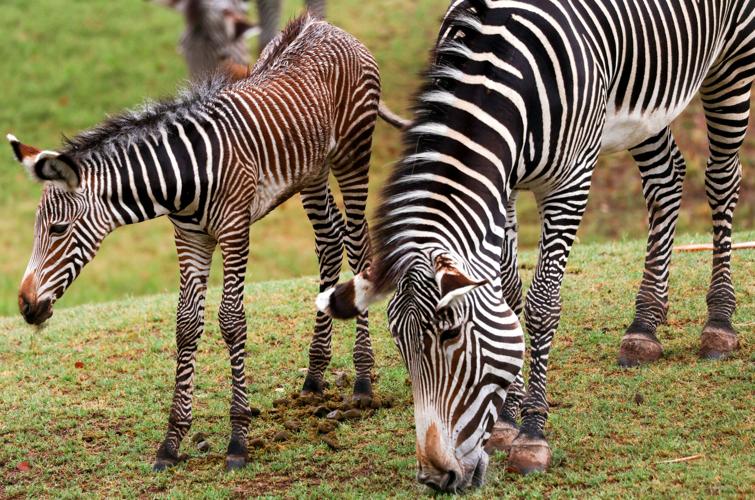Reid Park Zooтs zebra foal already has a spunky personality.
тShe has been very into the ducks in the habitat, and just loving life so far,т said Chelo Grubb, marketing and communications supervisor for Reid Park Zoological Society.
The Grevyтs zebra was born in the early morning hours of July 8 to mom Anna.
She is confident and sassy, said Julia Beres, animal care supervisor for Reid Park Zoo and one of the zebraтs caretakers.
тSheтs been chasing the ducks down, and chasing squirrels,т Beres said. тSheтs been jumping over a little log thatтs in the habitat. So she is incredibly active, very curious, and a very confident little girl.т
While a new arrival at the zoo is always an exciting event, the zebraтs birth is extra special.
People are also reading…
тShe is certainly a delight to be around, and happy to be running and spending time with her mom, but more importantly, Grevyтs zebras are an endangered species, so every birth is so important,т Grubb said.

The Grevyтs zebra foal, born July 8, explores her Reid Park Zoo enclosure with her mother Anna.
In the wild, Grevyтs zebras are estimated to number less than 3,000, and Reid Park Zooтs zebra herd is part of a coordinated effort by a number of zoos and wildlife parks to ensure a healthy population.
тThere are three different species of zebras, and Grevyтs are the largest, and most endangered,т Beres said. тWe take part in something called the Species Survival Program collaboratively with other zoos, trying to make sure that Grevy zebras stick around for generations to come.т
In partnering with the species survival plan, she said Reid Park Zoo is helping to maintain the genetic diversity of the species.
The zoo is also committed to assisting in the conservation of wild zebra populations.
тSince one of the main threats to Grevyтs zebras is habitat loss due to pastoral activities, we also contribute some funds to the Zebra Conservation Trust,т Beres said.

The female Grevyтs zebra foal at Reid Park is part of an endangered species. In the wild, Grevyтs zebras are estimated to number less than 3,000. Reid Park Zooтs zebra herd is part of a coordinated effort by a number of zoos and wildlife parks to ensure a healthy population.
Caring for a newborn zebra presents unique challenges, and the zoo has been preparing for months to make sure the herd and the habitat were ready for the foal.
тThe entire first year of life for a zebra whether itтs in human care or in the wild is really a tenuous time because theyтre young and still adjusting to their environment and Grevyтs zebras have incredibly strong flight instincts,т Beres said.
Three previous zebra foals died at Reid Park since 2014 as a result of accidental injuries, and Beres said the team is working on several different fronts to provide the safest environment for the new foal.
тOne thing that weтve been working on a lot with our older Grevyтs zebras т since baby is going to queue off of mom т is working on their resilience training,т she said. тWe have been working with them on getting comfortable with changes and sudden noises.т

The foal likes to chase ducks and squirrels.
The goal is to desensitize the zebras to environmental stimuli and build their confidence in new or stressful situations.
Beres said the team is already seeing encouraging benefits from its work.
тAnna is much more comfortable bringing her foal over to us at the fence,т Beres said.
The zoo also modified the zebrasт behind-the-scenes area, making their stalls larger, and made other improvements to increase the safety of the habitat.

Visitors are most likely to see the foal and her mom in the Reid Park Zoo habitat during the morning hours, zookeepers say.
тWe added a lot more substrate,т she said. тAnd that helps create a lot more traction. Especially because itтs monsoon season right now, we want to make sure that we are eliminating potential slips and falls.т
The keepers havenтt officially chosen a name for the new baby zebra, but, Beres said they are deciding between a couple of names, and hope to reveal the winning name to the public soon.
In the meantime, УлшжжБВЅans can see her antics at the zoo. Youтre most likely to see the foal and her mom in the habitat during the morning hours, Beres said.









